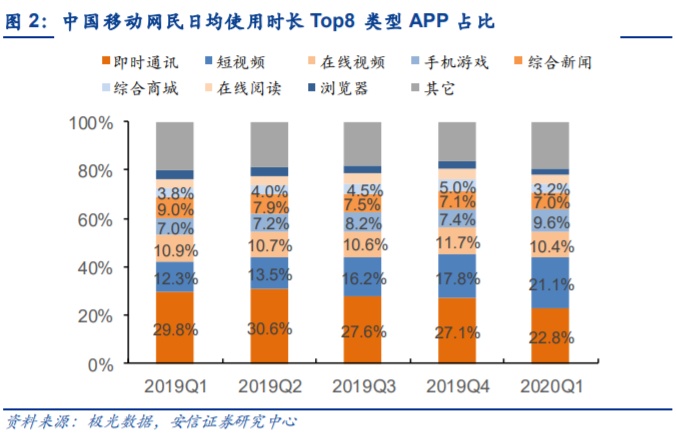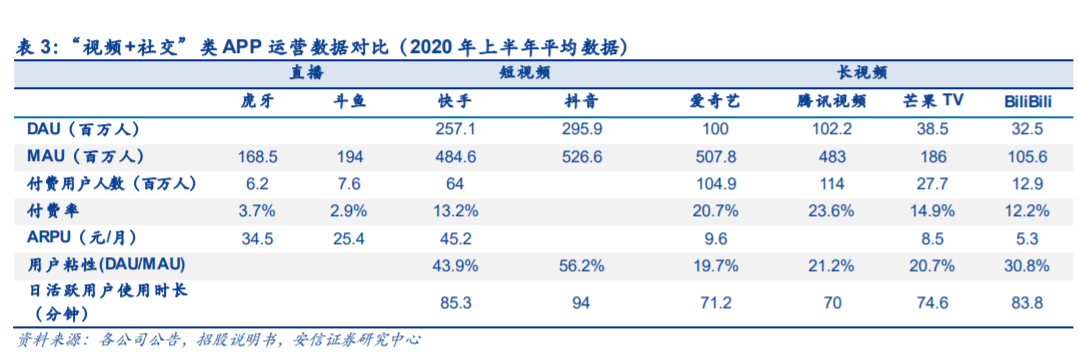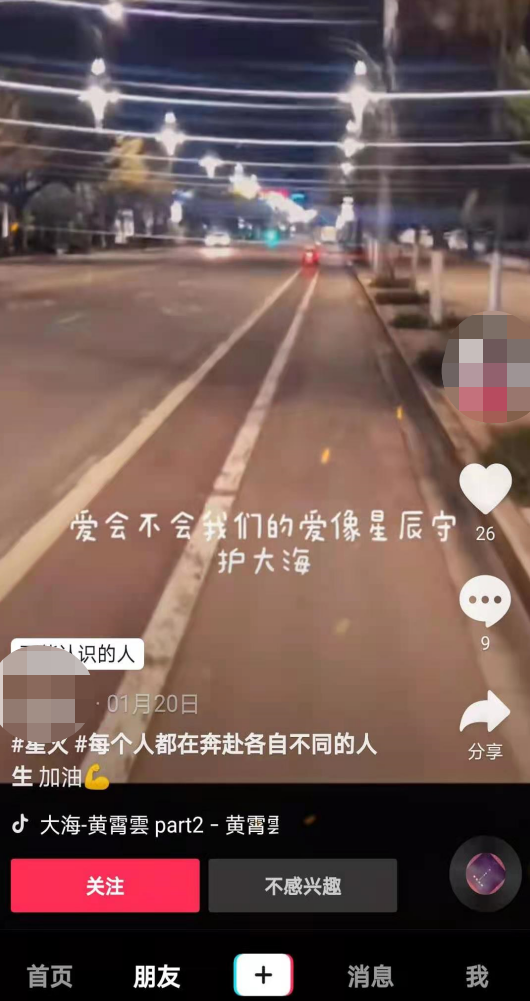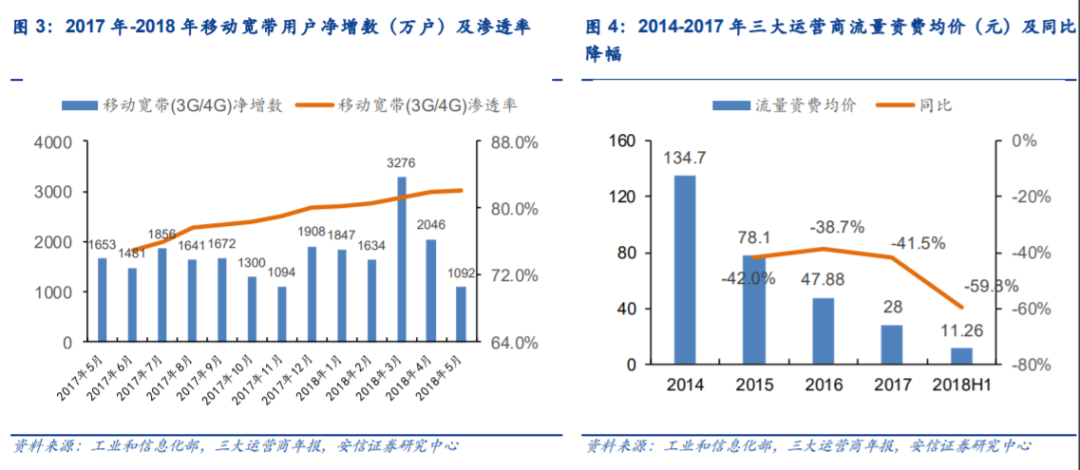Socially video, video is also inseparable from social
Editor’s note: This article is from the micro-channel public number “Internet refers to the North” (ID: hlwzhibei), Author: refers to the North BB group Fu-sheng.
You may have noticed that since the 8.0 version update was launched on January 22, the national product discussion around “WeChat” almost completely dominated the entire industry media context, and the theme was quite clear: from adding me When it comes to the full-screen video account, people are curious why WeChat, which emphasizes product experience and product boundaries, gives “video” such a strong weight increase?
In fact, Zhang Xiaolong gave an official reference answer to this question-just a few days before the release of version 8.0 (that is, on the night of 2021 WeChat), Zhang Xiaolong mentioned a set of data, that is, there are 1.09 billion daily 330 million people have opened WeChat for video calls; 120 million people have posted Moments—Among them, there are 100 million Moments posted by “short videos”.
Based on these data, Zhang Xiaolong came to this conclusion: For WeChat, this classic “social product”, “video expression” has become an increasingly common way to use it.
Coincidentally, at the Innovation Conference 2021 held in Geek Park on January 28, when Beijing Bytedance CEO Zhang Nan explained the changes in Douyin’s social relationship, he also talked about the topic of “video + social” .
In Zhang Nan’s view, from the original short video product to the gradually established social relationship, Douyin is naturally undergoing some changes. For example, he found that half of Douyin users are browsing their “friend content” or interacting with friends every day. Considering that Douyin currently has “600 million” daily activities, we are more and more accustomed to watching Douyin. To their acquaintances, more and more users are shifting from consuming content to self-expression.
In addition to the coming Spring Festival and Spring Festival Gala, the two most classic traffic window periods in China, it seems that they are constantly being defined by “short video products” and “social products” in turn, especially this year’s Douyin, Kuaishou, Baidus’ actions of smashing huge sums of money for the Spring Festival stalls continue to be on the hot search. A series of events in series seems to be sending two important signals:
-Although people have not mentioned much about social in the past 2020, the giants still believe that the potential of social has not been fully explored, and “social” still plays the most core role in each ecology;
– “Video” is increasingly regarded as the best bonus item for “social”, and it is the most likely and most valuable breakthrough in social networking.
It is also under this situation that more and more people believe that when social giants begin to think that video is the most likely and most valuable breakthrough in social interaction, at the same time video platforms have begun to naturally undergo some social evolution. On two seemingly unrelated tracks, video and social, the two may be destined to usher in a matchwar.
Speaking of the doomed war between video and social, we have to start with the relationship between video and social.
On the application level: social interaction is essentially the establishment of relationships between people and the transmission of information. Simply put, in addition to establishing contact with people, how to deliver more intuitive and richer information faster and more concisely is what people have been pursuing in the process of social information transmission.
In the history of media development in the past 30 to 40 years, our information transmission has completed the transformation from paper and other material media to information and digitalization. Correspondingly, in terms of content form, information transmission has also completed the changes from text, to graphics, to audio and then to video.
Along with the development of media, there is another trend: With the continuous maturity of communication technology and Internet technology, the information we can express in an information transmission process becomes more and more abundant.
Today, with the maturity of 4G and 5G technologies, video has become one of the most important ways of information transmission and content consumption in our daily lives. The popularity of this method also makes it more and more common for people to share videos.
From QuestMoblie’s data on my country’s short video industry, we can find that starting from the large-scale popularization of 4G technology in 2016, the number of monthly active users in China’s short video industry has increased year by year. By June 2020, my country’s short video industry will have monthly active users. The number reached 852 million, and the penetration rate reached 73.9%.
As for the average daily usage time of Top8 apps in China Mobile, we found that short videos and online video collections accounted for 31.5% in the first quarter of 2020, exceeding 22.8% of instant messaging.
Obviously, as the most informative expression in the new era, video is already in every aspect of people’s lives. For example, on the stage of WeChat Night 2021 a few days ago, Zhang Xiaolong said that in the current WeChat ecosystem, 120 million people publish Moments every day. Among these contents, there are 100 million video Moments; and in the last five years , The number of video messages sent by users every day has increased by 33 times, and the number of videos posted in Moments has increased by 10 times.
It can be seen that video is becoming an integral part of social interaction. Of course, in addition to social networking requires video, in fact, video is also inseparable from social networking.
In the words of Beijing ByteDance CEO Zhang Nan, “Humans are socialized animals. It is instinct to record life, want to express, want to connect with others, and have some interaction.”
So from the beginning of the video, people are destined to want to spread it and share it. Because video is essentially a tool to record life, express oneself, and convey information. People who watch videos need to express themselves through social interaction; in terms of content production and dissemination, social relationships are also the first and most basic link in video dissemination.
So, in the process of this kind of dissemination and sharing, the relationship between people in real life is established on the Internet.
This logic is actually applicable to all content forms, from text to graphics, to video, they have all gone through this stage of development, but for now, video has become the protagonist in this communication process .
So, from being the mainstream of the current era, from video platforms to social platforms, there is actually a natural relationship between them that promotes and achieves each other.
For example, when the video platform and social platform are connected, we see some fun videos on the short video platform, and we especially want to share it with our friends. In this sharing process, the spread of videos has increased the richness of social content, while social relationships have also promoted the spread of videos.
This is a perfect and win-win situation, such as WeChat and Kuaishou. Among them, Kuaishou as a short video platform provides people with video consumption content and video production tools. With the blessing of WeChat, videos have been better disseminated; in turn, WeChat, as a social giant, provides a channel and venue for video content dissemination. , It also promotes social activity and relationship stickiness.
Of course, the premise of this state is that the social platform and content platform are both open, and when one of the two platforms is not open, this harmonious relationship will produce a reverse change, such as Douyin and WeChat.
As everyone knows, Douyin videos cannot be shared to WeChat, so when people want to share a video, they have to download it and send it to WeChat. Of course, in order to save trouble, more people will choose to add each other in DouyinFriends, avoid cross-platform delivery of content.
So when the social platform and the video platform are not connected, but the video demand of the social platform and the social demand in the video track are objectively present, the strong demand will force the video platform to establish its own social relationship chain. The platform will also try to build its own video content.
When video and social networking get closer and closer, the collision between these will inevitably occur.
Social and video, in the final analysis, are two completely different tracks, but when it comes to war, it must correspond to a rivalry between two or more applications.
On the social side, it is not difficult to imagine that WeChat is the only social giant in the entire domestic Internet industry. And with the update of version 8.0, from video number to video status, WeChat’s video layout has been close to perfection.
As we said earlier, strong demand will inevitably promote social incubation of their own video applications. For WeChat, perhaps external content can satisfy internal needs, but other people’s things are definitely not as good as their own.
Compared with the indisputable WeChat in the social field, the video track is much more complicated.
The first is the long video represented by You Aiteng, and the Chinese video represented by Station B and Watermelon Video. Among them, the main focus of long videos is content consumption, that is, users pay for or purchase members in exchange for content services. China Video focuses on in-video interaction, with content consumers communicating through barrage and other methods.
So, medium and long videos are not very capable of generating social relationships. This conclusion is also true from the data.
In the comparison of the average data of a “video + social” APP released by Essence Securities in the first half of 2020, we found that the DAUs of iQiyi and Tencent Video are both around 100 million, while the B station only There are about 32 million. The corresponding DAU Kuaishou of short videos reached 257.1 million, and Douyin reached 295.9 million.
In terms of user stickiness, iQiyi and Tencent Video are around 20%, while that of station B is 30.8%. The daily active users of both are around 70~80 minutes. Correspondingly, in the short video, the user stickiness of Kuaishou and Douyin were 43.9% and 56.2%, respectively; the duration z of daily active users was 85.3 minutes and 94 minutes, respectively.
Therefore, due to the small user size, user stickiness and low usage time of daily active users, medium and long videos are relatively weak in terms of external social relationship demands, as well as the establishment and conversion of social relationships.
In contrast, short videos have a higher number of users, higher user activity, and longer user usage time, which is more conducive to the germination of social relationships, and users’ social needs are also stronger.
In addition, in terms of content, due to the vertical screen mode of short videos, the duration is shorter and the content has more life attributes, which are more satisfied with the video dissemination conditions people need in social interaction. Therefore, just as Zhang Nan said when commenting on Douyin, the social development of short videos is natural.
So, since short videos are the most suitable scenes for social interaction, who can win Douyin and Kuaishou in the “video + social” model? The answer is actually very simple.
We found that video as a new field of social interaction, the core driving force is actually mainly divided into two, namely internal force and external force. Among them, internal force is an internal demand, that is, videos need social relationships to spread, and people also need to spread and share content. The external force is the external reverse force, that is, if this demand does not get an external outlet, it will turn to internal fermentation.
On the other hand, social networking in the short video industry also has a particularity that is difficult to avoid: when a behemoth like WeChat already exists, the social needs of short videos are easily accepted by WeChat. This is like a pond with many tributaries, no amount of water can be stored into a pond.
So in this context, it is difficult to effectively transform it with only internal needs, and this is what Kuaishou is facing. Because of the connection between Kuaishou and WeChat sharing links, the social needs derived from Kuaishou are naturally taken over by WeChat, so it is difficult for Kuaishou’s acquaintances to settle internally.
Similar to Kuaishou, the social needs of Douyin should have been taken over by WeChat. However, due to WeChat’s blocking of Douyin’s sharing channels, this is equivalent to actively blocking the leakage of this demand, so Douyin’s Social needs can only turn internally to seek fission.
For example, when we see a fun video on Douyin and want to share it with friends, since WeChat cannot share the link by itself, users need to download the video first, and then share it through WeChat.
Whether this sharing mode increases the opening of Tik Tok is not mentioned first. Simply speaking of the complexity of the sharing content will enable many familiar friends to skip WeChat and add friends to each other in Tik Tok. In fact, this directly promoted the initial establishment of Douyin’s familiar relationship.
And asIf you look closely at Douyin, you may also find that in the comments below many popular videos, people will always habitually @自己的朋友. This is actually because external sharing is not smooth, which turns into a form of internal interaction. .
Therefore, in response to this need for internal social interaction, we found that Douyin also responded accordingly. For example, in the early version of Douyin, videos posted by friends appeared randomly in recommended content.
In the current latest version, you can see that the content of randomly recommended friends has replaced the same city and has become a first-level entrance alongside the homepage. Under this Tab, users can see videos updated by friends and people they might know recommended by the algorithm. And in this change, you can also feel a taste similar to the video circle of friends.
So, if anyone is most likely to build a new social empire based on video, Douyin is undoubtedly the one with the most chance.
Finally, come back and talk about the video.
As we said earlier, more intuitive and more authentic conveying of information is what people have always pursued, and it is also the need of the times. And this need is often restricted by the development of technology and the cost of information transmission after the technology is available.
For example, in the 1930s and 1940s, although there were already telegrams at that time, everyone cherished their words when they took the telegram, because the cost of the telegram was too high.
In the past two decades, with the integration and development of communication technology and Internet technology, not only has technology become more and more mature, but the cost of information dissemination has also decreased year by year. This also makes it possible for the widespread dissemination of rich media content such as video.
Plus, content dissemination is ultimately a social service between people, and the transmission of social information ultimately carries content. So when the videoMore and more expressions are indispensable in people’s lives, and some predictable chemical reactions will inevitably occur between it and social interaction.







